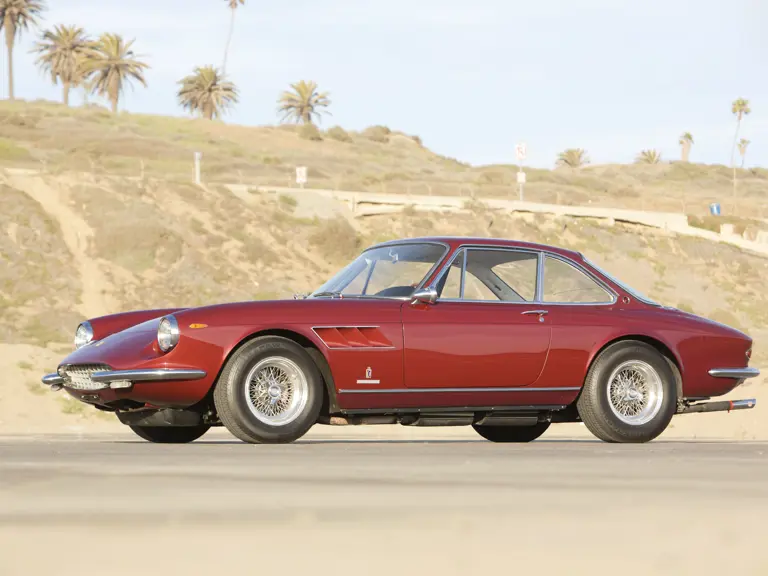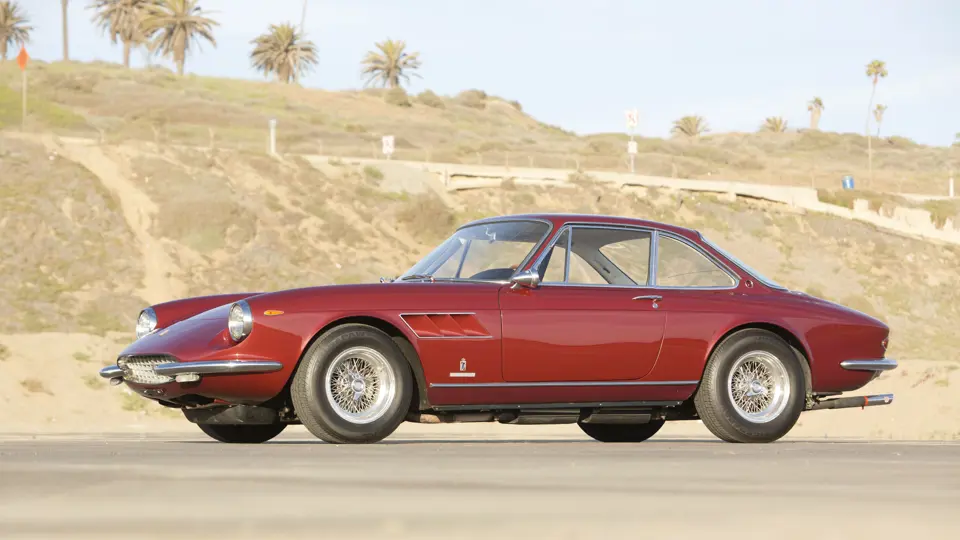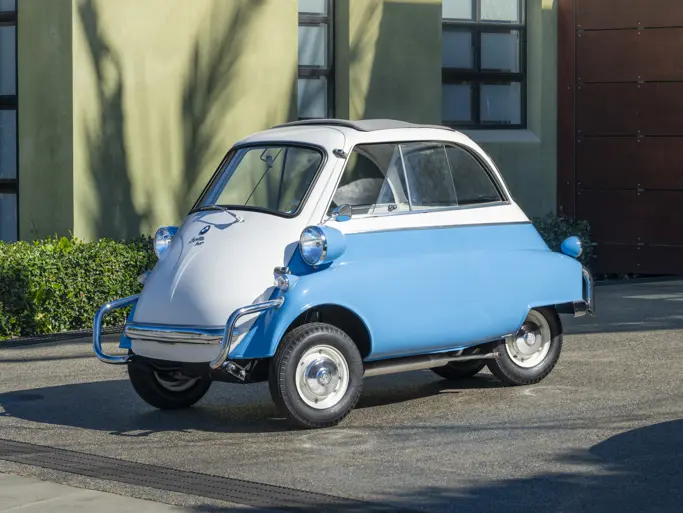When Ferrari’s 330 GT 2+2 was introduced at the Brussels Salon in January of 1964, it was to be the last word in grand touring automobiles of the time. While featuring a luxurious interior with seating for four, the car delivered the performance that Ferrari’s seasoned customers demanded. However, many clients wished for a grand touring car that featured the same caliber of luxury with improved performance. Ferrari promptly answered their calls with the 330 GTC. Combining the best components from different models in the Ferrari range, Ferrari’s newest offering would provide its owners with an unparalleled driving experience, one that would continue to push the performance envelope of the 330 chassis whilst also expanding upon the refinements that owners had come to expect of the cars from Maranello.
Some would refer to the GTC as the Swiss army knife of the 330 series, combining the best of design and mechanical aspects from a handful of different Ferraris available in its day. Introduced in 1966, Ferrari’s newest addition to the 330 model range effectively molded different aspects of a pair of Ferrari models, the 330 GT 2+2 and the 275 GTB, into one distinct model. The 330 GTC used the same suspension, steering, and transmission as the 275 GTB, giving it thrilling handling and a muscular feel. By adapting a wheelbase 10 inches shorter than the 330 GT 2+2, it made the car much more nimble in comparison. Undoubtedly, the car’s most sporting aspect was its 4-liter Colombo V-12 engine. Rated at 300 horsepower, accelerating from 0- to 60-mph took under seven seconds, and the car would go on to achieve a top speed of 150-mph, faster than all but the most powerful sports cars of the day.
The design of the 330 GTC took many key elements from past Pininfarina designed Ferraris: the 330’s tail was first seen on the 275 GTS, whilst the nose of the car is similar to the limited-production Series II 500 Superfast. With the shorter wheelbase, the 330 had no space for rear seats like the 330 GT 2+2, so a rear parcel shelf was installed in its place. However, this decrease in wheelbase did not result in a noted decrease in space for its two passengers or their luggage. Like the stunning 250 Lusso, it utilized thin A and B pillars in order to provide more visibility for the driver, which gave the cabin a very airy feeling. By the time production ceased, only 598 examples had been produced.
The Ferrari 330 GTC we have the pleasure of offering here is in beautifully presented condition and remains an outstanding example that is exercised regularly by its enthusiast Southern California gentleman owner. According to the car’s Massini Report, the 330 was completed in October of 1966 in Argento over a Rosso interior and was purchased new by New York, NY resident W. David Tallmadge. At the time the car was described as being kept in immaculate condition and a U.S. delivery example with factory air conditioning.
In 1979 the Ferrari appeared under new ownership with Carl Richard Larsen of Minneapolis, Minnesota with who it remained, until the early 1990s. After a change of ownership in the mid-1990s, 09125 GT was treated to a full restoration by noted Ferrari restorer Wayne Obry’s Motion Products at which point it received the beautiful burgundy paint and cream leather that it retains today. Further adding to the cars prominence, in 2009 the 09125 GT underwent a meticulous mechanical restoration performed by Peter Markowski’s RPM Motors in Vergennes, Virginia while under the ownership of Mr. Markowski’s business partner.
For people used to modern cars with their power assisted controls, a drive in a car from this era can come as either a crude shock or a breath of fresh air depending on one’s perspective. The 330 GTC falls into the latter category and genuinely surprises at how ‘modern’ it feels, even on somewhat pocked Los Angeles city roads. This example in particular remains in excellent condition and on a recent test drive by an Auctions America specialist it performed admirably and ran as one would expect. The steering is light and nimble, the shifting fluid throughout all the gears and the servo-assisted disc braking strong. The throttle is very responsive and the 4.0-liter V-12 Colombo engine really comes to life after 3,500-rpm.
Cosmetically, the paint looks very nice and while it shows some slight patina from age, one can see how high-quality the restoration was. The interior is nice and the leather remains unscathed from any tearing or significant wear. The carpets are nice with no staining or damage. The engine bay is also tidy and all the right details appear to be correct. The chrome and brightwork appear nice and show only slight wear due to age.
It is complete with a partial toolkit, jack and books. The car has recently received the Classiche certification it is a correct, matching numbers example retaining both its original engine and gearbox as well as chassis and coachwork. Combining aspects from the 275 and its four-seater sibling, the 330 GT 2+2, the 330 GTC is an excellent car for the Ferrari owner who wants to be able to use an Enzo-era Ferrari as more than just a show car. The 330 GTC remains one of the most enjoyable, well-balanced models Ferrari has ever produced.



 | Santa Monica, California
| Santa Monica, California


